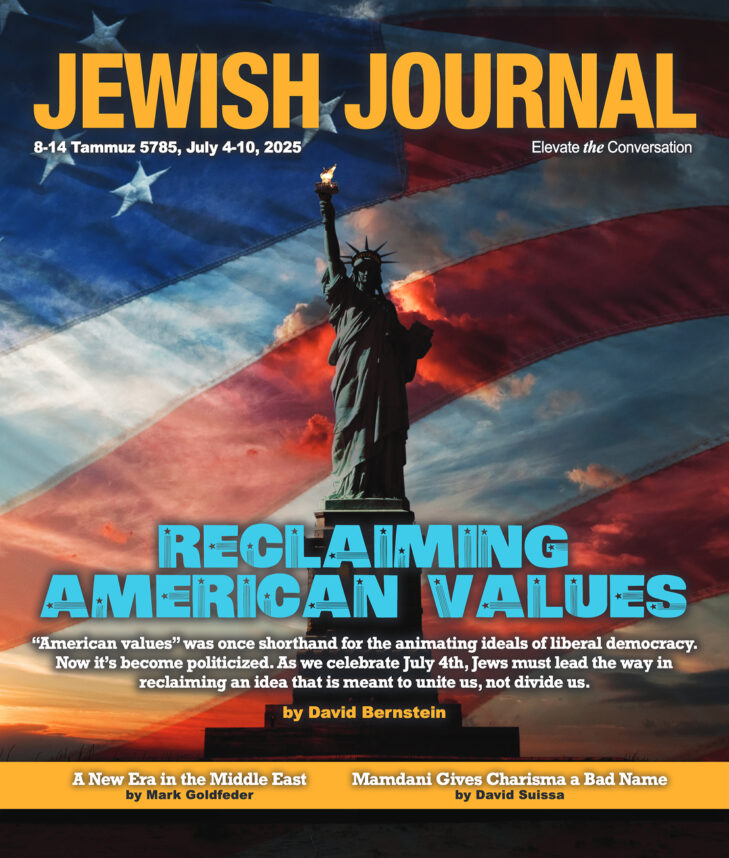
One verse, five voices. Edited by Nina Litvak and Salvador Litvak, the Accidental Talmudist
The Cherubim shall be with wings spread upward, sheltering the Cover with their wings with their faces towards one another; towards the Cover shall be the faces of the Cherubim.
– Ex. 25:20
Kira Sirote
Author of “Haftorah Unrolled,” Ra’anana, Israel
We’re used to thinking of Judaism as the oldest religion, but that’s really not the case. By the time we meet Avraham Avinu, civilization has everything it needs — money, bureaucracy, politics, law, and of course, religion. Egyptian religion had been around for over 1,000 years, and Mesopotamian religions even longer. We’re the newcomers, the rebels. The Torah references those religions, sometimes directly, and sometimes through what it doesn’t say, what is not there.
Last week in Mishpatim, the Torah gave us laws that could have been copy-pasted from law books that were around in the time of Avraham Avinu. But only after editing them heavily: Some the Torah approves of and uses; some, it disapproves of and changes. Others, it erases entirely. The Torah is subversive, always judging the society around us, to see if it conforms with what is right in the eyes of Hashem.
Those older religions would carry idols of their gods sitting on thrones. Some were resting upon winged creatures, others were protected by a winged creature. The Torah has us make a throne that is carried, with winged creatures hovering over it, facing the space where the idol ought to be. But there is no idol.
The world wants us to fill in that space with whatever they worship, making it in their own image, with their own ever-changing values. But the throne that our Cherubim face is empty. His Presence — His judgment of what is right and wrong — fills the entire world.
Rabbi Nolan Lebovitz
Valley Beth Shalom
What does it mean that we furnished atop our ark, our holiest vessel, two celestial beings facing one another? The 15th Century Italian Torah commentator Sforno believed that the Cherubim were an allusion to the angels referenced in the prophetic visions of Isaiah and Ezekiel. Perhaps the Cherubim are meant to remind us of the heavenly beings protecting the ark.
On the other hand, perhaps the Cherubim are meant to point us to the possibility within ourselves. We are a tradition that values face-to-face relationships. By example, the Torah exalts the relationship between Moses and God by explaining that they communicated “face to face.” (Ex. 33, Deut. 34)
We are a people who mark our ritual moments in community, surrounded by neighbors. As a people, we advocate for ourselves unmasked. As a family, we eat Shabbat dinner facing each other around a table. As partners, we express our love face to face in moments of intimacy. As individuals, we yearn for friendship. Each and every time that we approached the ark, the Cherubim emphasized that the Ten Commandments were meant to draw us closer together. We are to use the wisdom of our tradition to build relationships, to create profound transcendent moments of possibility. Any hope of fixing the world at large begins with focusing on our closest relationships. Any strategy of world peace begins with two neighbors face- to- face. The holy ark reminds us that we all possess the choice to live like Cherubim.
David Sacks
Happy Minyan of Los Angeles
The Ark of the Covenant isn’t just a beautiful vessel holding the tablets that G-d gave us at Mount Sinai, it is also a model of the heavens and the earth. We exist inside the ark, with the Torah that G-d gave us. Just like the ark has a cover, our world has a cover too, limiting our vision of everything beyond us. Above us are the angels. These are the golden angels above the ark. And above all that is Hashem. He exists dimensions beyond time and space, while at the same surrounding and filling all worlds including our own.
If you were to climb a single letter of the Torah, it would be a thread of light taking you higher and higher, to dimension after dimension, until you reached its root in the mind of God. In each of these dimensions, the exact same Torah we have is learned by assemblies of angels. They see clearly that the Torah is more than a book … It is the fabric of the universe. This knowledge is engrained in our DNA.
When God gave us the Torah, our souls flew out of our bodies. What did we see? That the Torah doesn’t just exist in this world. It is the structure of the heavens itself. My Rebbe Shlomo Carlebach put it even deeper. He said, the Torah is G-d’s prayers and dreams for the world. And when we keep it, we pray G-d’s prayers, and dream G-d’s dreams.
Benjamin Elterman
Screenwriter, Essayist, Speechwriter at Mitzvahspeeches.com
Rashi says the Cherubim on the Ark have faces like children. But in the book of Genesis after Adam and Eve are expelled from the Garden of Eden, a Cherub is placed to guard the entrance with the “flame of the rotating sword.” There, Rashi comments that the Cherubim are angels of destruction. So which are they? Innocent children? Or Hashem’s agents of destruction with fiery weaponry?
In Rambam’s introduction to “The Guide for the Perplexed,” he discusses prophecy and inspiration. Regarding the lowest level of enlightenment, the people who are surrounded in darkness and are disconnected from Torah, he says even they receive an epiphany every now and then. He compares their insights to “the flame of the rotating sword.” Why would he compare the inspiration of a secular source to the weapon of the Cherub guarding the entrance to Eden?
This flame of the Cherub is a metaphor for the illumination, specifically the wisdom of Torah (symbolized by the Tree of Life), which the Cherub guards. For those disconnected from Torah, they experience flashes of wisdom randomly (or *rotating*). However, that wisdom without the guidance of Torah can lead to destruction. If one seeks wisdom properly, by studying the Torah (and remember the Ark which the Cherubim sit upon, represents the Torah as well), a person’s inspiration and enlightenment will be far more regular, if not constant, and that wisdom will be sweet and pleasant like the face of a child.
Rabbi Yoni Dahlen
Spiritual Leader/ Congregation Shaarey Zedek, Southfield Michigan
The most elusive aspect of Torah is defining exactly what Torah … well … is. Sages, archaeologists, and scholars have spent millennia arguing about the proper literary categorization of our sacred text with no ultimate consensus. Legal code? Myth? History? The answer to that question matters, because it creates the lens through which we see every letter, every detail of our lives. To me, the answer lies in this short but beautiful description of the cherubim.
Judaism has a powerful understanding of holy creatures. Call them whatever you’d like – angels, messengers, spirits; they all represent the same concept, an existence that balances between heaven and earth, between the ineffable and the carnal. But what or who is considered to be part of this category is intentionally fluid. Because to elevate to that realm, that magical space of the in-between, is not about biology, it’s about humility. It’s about connectivity.
Our Rabbis teach us that we become the cherubim. Not through ego or the journey of the self, but through seeing the other. Honestly and authentically seeing the other. Bowing our heads to shed our own importance so that we can look into the eyes of our fellow sparks of creation and see them, the entirety of them, the divine within them. The cherubim on the ark are not idols. They are not meant to be worshiped. They’re meant to inspire us, to remind us of who we are and who we are asked to be. Torah is the invitation to become angels.


































 More news and opinions than at a Shabbat dinner, right in your inbox.
More news and opinions than at a Shabbat dinner, right in your inbox.